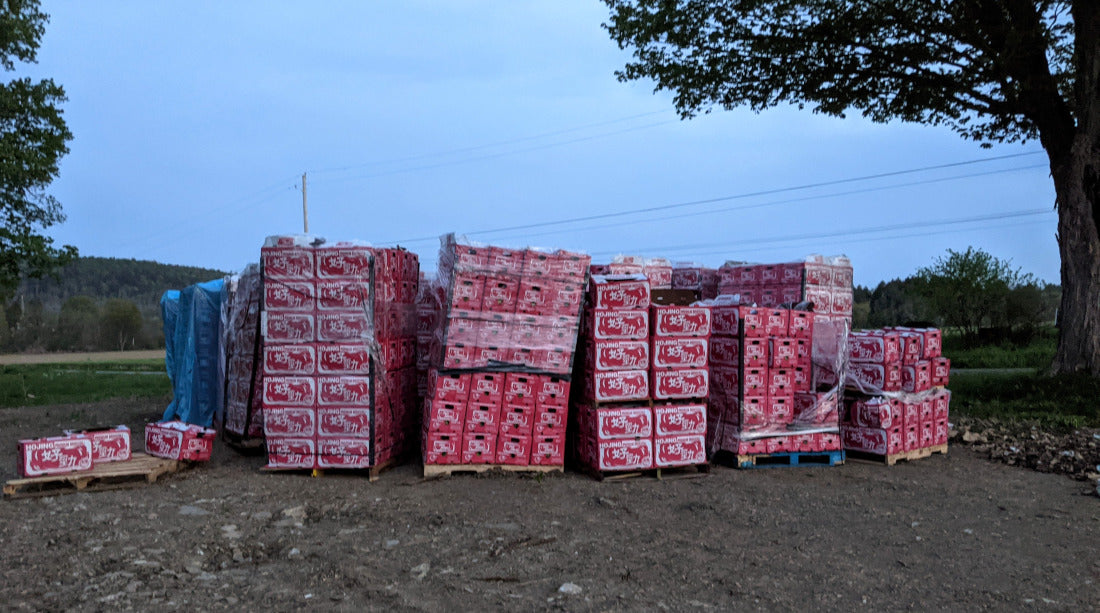Gazing upon the forty-two thousand pounds of broccoli that is currently sitting in palletized stacks of boxes down by my driveway raises some questions: questions about the intricate supply chain that brought it from a field in Mexico to my farm in central New York, questions about a food system that aggregates and disaggregates food in such vast volumes, and most of all questions about what to do with a vast amount of extremely perishable vegetable matter.
But before I go into any of that, let me try to explain just how much broccoli I’m talking about. Picture a semi truck with a full length trailer packed to the gills with broccoli. Imagine three adult male African elephants, but made of broccoli. Imagine preparing a dinner for four with a generous serving of broccoli florets tastefully arranged around a steak or some sauteed chicken breast. Then imagine serving that same dinner every evening for the next fifty-seven years. In other words, it is an amount of broccoli that is very difficult to comprehend without seeing it firsthand.
This has happened before, once with mangoes and twice with broccoli, and each time it goes the same way. First, Ed receives a call from a dispatcher, saying that a truck has been turned back at the Hunts Point Produce Market, meaning a whole lot of perishable stuff needs to find a home in order to avoid ending up in a landfill. Ed then hems and haws—since we don’t have a loading dock it’s a lot of work, and it’s more work to compost it—but then accepts it. At the end of the day it seems like a good idea to keep a truck full of produce from the dump.
The reason for the rejection has always been age. For instance, the mangoes were perfectly ripe, which meant they would be turning by the time they managed to work themselves through the wholesalers and down to home or restaurant kitchens. The broccoli wasn’t pristine, but it was exactly what you’d expect to find on the shelf of your local supermarket.
I hope I’ve adequately explained just how immense an amount of broccoli I’m talking about here. But what’s amazing is that this is the smallest sliver of a sliver of the broccoli production. Twenty tons is the yield from just 2 ½ acres of broccoli, while more than 129,000 acres of farmland are devoted to it. And that’s just in America—remember, this broccoli came from Mexico. I can’t find good stats for production south of the border, but I’m confident it would be some tens of thousands of acres.
There is undeniable efficiency to this arrangement. It is precisely because the global food system has gotten so good at growing popular crops in large enough amounts to fill trucks that broccoli and apples and lettuce can be available in every store, all year long, for historically cheap prices. But production on an industrial scale means waste on an industrial scale, with one error in timing or refrigeration leading to tons of produce being dumped.
The broccoli on Cairncrest Farm will meet a marginally better end. A few people came and picked up some cases for themselves and their friends, but most of it will end up being composted. In a surprisingly short time all that broccoli and all the work it represents will be nothing but dirt.

